Why you can trust Tom's Hardware
Comparison Products
We put the Mushkin Gamma up against several of the best SSDs available today. These include the Samsung 980 Pro and WD Black SN850, as well as a few other Phison E18 powered SSDs such as the Gigabyte Aorus Gen4 7000s, Sabrent Rocket 4 Plus, and Inland Performance Plus. We also added the Patriot Viper VP4300 and Samsung 970 EVO Plus for additional perspective.
Game Scene Loading - Final Fantasy XIV
Final Fantasy XIV Shadowbringers is a free real-world game benchmark that easily and accurately compares game load times without the inaccuracy of using a stopwatch.
When it came to loading up each level of Final Fantasy XIV’s Shadorbringers benchmark, the Mushkin Gamma managed to outperform both Samsung’s 980 Pro and Patriot’s Viper VP4300 with a solid time. Even so, with the second-fastest total time in the bunch, it wasn’t quite able to show up the WD_Black SN850.
Transfer Rates – DiskBench
We use the DiskBench storage benchmarking tool to test file transfer performance with a custom dataset. We copy a 50GB dataset including 31,227 files of various types, like pictures, PDFs, and videos to a new folder and then follow-up with a reading test of a newly-written 6.5GB zip file.
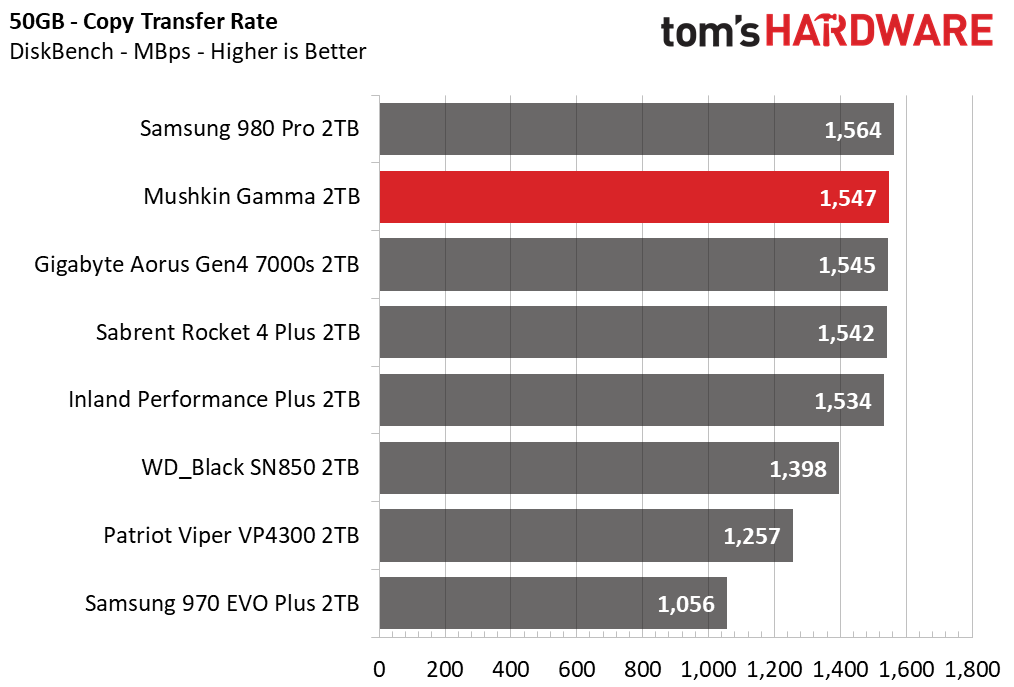

While the WD_Black SN850 was the top dog in our game load test, it fell behind the E18 competitors here, now trailing the Mushin Gamma. Mushkin’s Gamma scores second place again, however this time it showed similar performance to that of the Samsung 980 Pro when tasked with copying many files. But when tasked to read back our large .zip, it pulled ahead of the Samsung 980 Pro, outperforming it by roughly 200 MBps.
Trace Testing – PCMark 10 Storage Test
PCMark 10 is a trace-based benchmark that uses a wide-ranging set of real-world traces from popular applications and everyday tasks to measure the performance of storage devices. The quick benchmark is more relatable to those who use their PCs for leisure or basic office work, while the full benchmark relates more to power users.






Mushkin’s Gamma scored a respectable result overall here, and outperforms the InnoGrit-powered Patriot Viper VP4300, but like the other Phison E18 powered competitors, could not match the responsiveness provided by both the WD_Black SN850 and Samsung 980 Pro in these workloads.
Get Tom's Hardware's best news and in-depth reviews, straight to your inbox.
Synthetic Testing - ATTO / CrystalDiskMark
ATTO and CrystalDiskMark (CDM) are free and easy-to-use storage benchmarking tools that SSD vendors commonly use to assign performance specifications to their products. Both of these tools give us insight into how each device handles different file sizes.



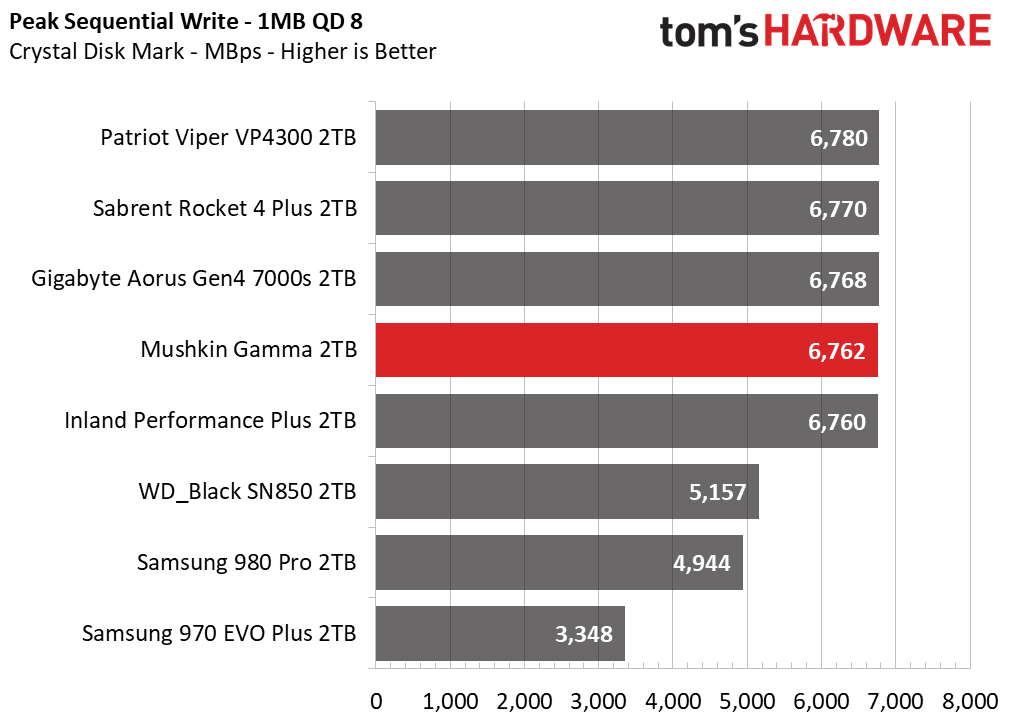









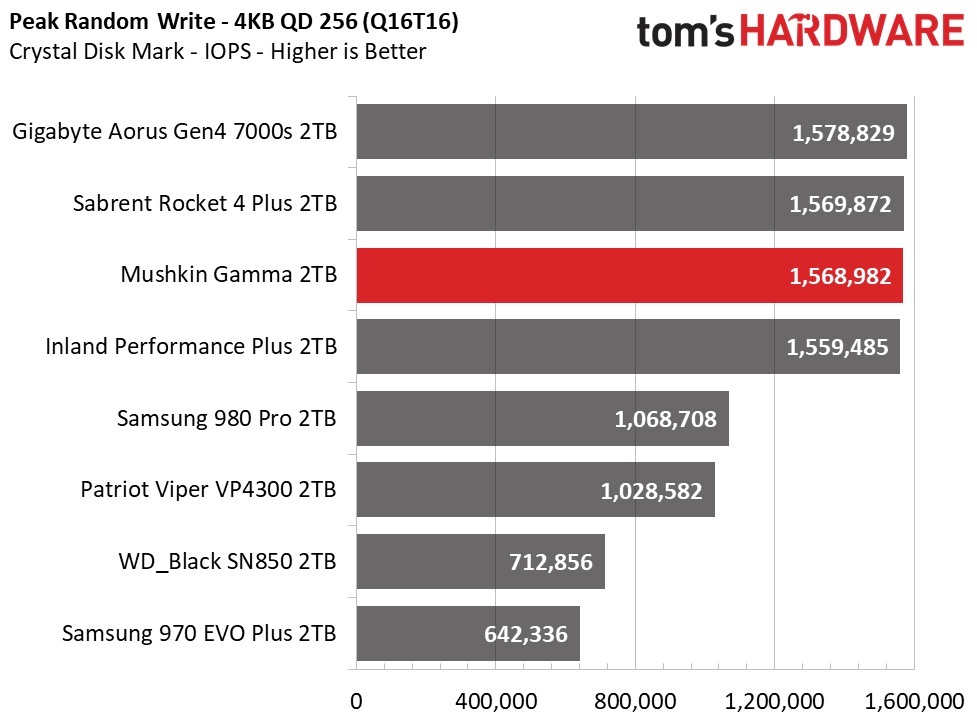
Sequential performance is the Mushkin Gamma’s strong suit, especially when it comes to writing. At a queue depth (QD) of one, performance scales well across most block sizes, and it even manages to outperform Smausng’s 980 Pro and WD Black SN850 when writing, but these two top competitors deliver a bit better read performance than the Gamma.
Furthermore, Mushkin’s Gamma delivered respectable random response times, but still wasn’t quite able to match the responsiveness of the best with Micron’s B27B TLC holding it back. At ultra-high queue depths and using 16 threads to achieve them, the Gamma delivered roughly 1.6 million random write IOPS, though.
Sustained Write Performance and Cache Recovery
Official write specifications are only part of the performance picture. Most SSDs implement a write cache, which is a fast area of (usually) pseudo-SLC programmed flash that absorbs incoming data. Sustained write speeds can suffer tremendously once the workload spills outside of the cache and into the "native" TLC or QLC flash. We use iometer to hammer the SSD with sequential writes for 15 minutes to measure both the size of the write cache and performance after the cache is saturated. We also monitor cache recovery via multiple idle rounds.
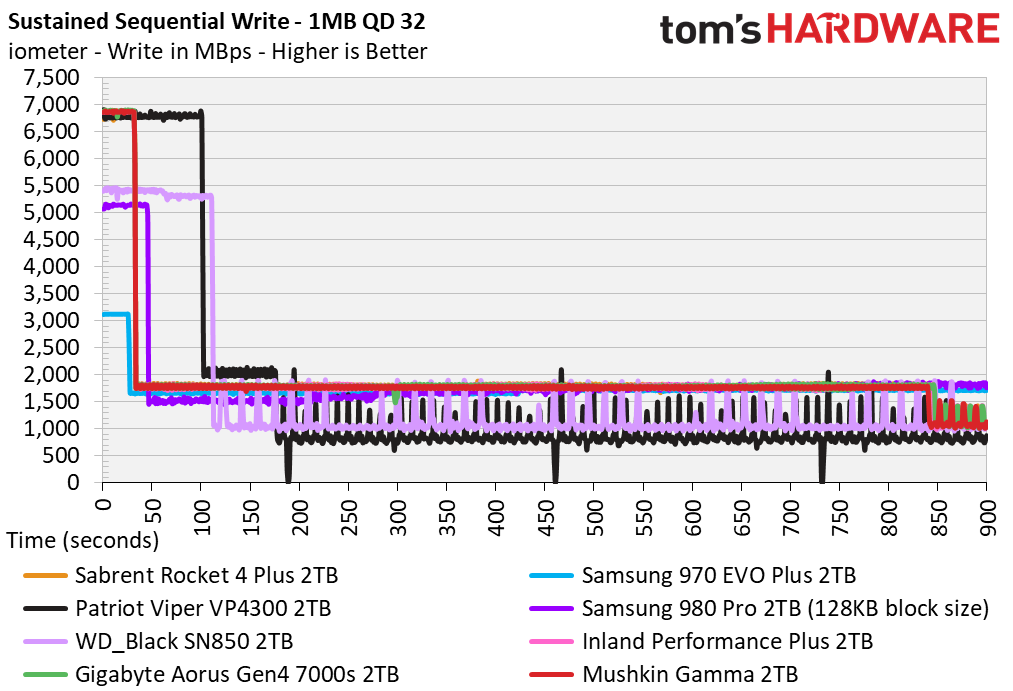



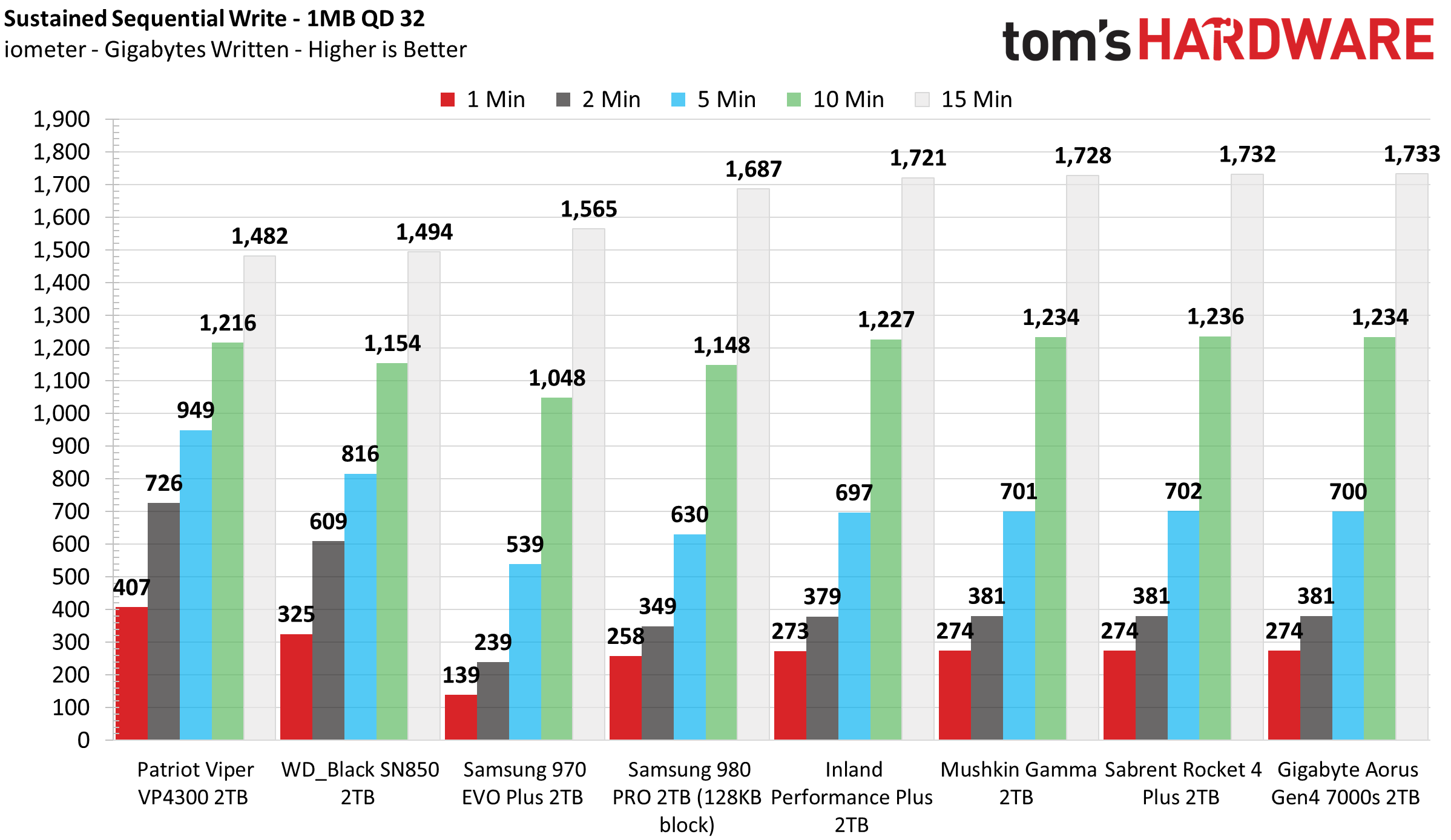
Mushkin’s Gamma features a good-sized SLC write cache and sustained performance once the cache is full. The Gamma wrote roughly 225GB of data before degrading in performance, falling from 6.9 GBps down to an average rate of 1.8 GBps for an additional 1.4TB. Beyond that point, write speed fell once more, averaging 1,140 MBps for the remainder of the test. After multiple idle rounds, measuring up to 30 minutes, the Gamma did not recover its SLC cache, but recovered from its slowest write speeds, averaging 1.8 GBps throughout each test round.
Power Consumption and Temperature
We use the Quarch HD Programmable Power Module to gain a deeper understanding of power characteristics. Idle power consumption is an important aspect to consider, especially if you're looking for a laptop upgrade. Some SSDs can consume watts of power at idle while better-suited ones sip just milliwatts. Average workload power consumption and max consumption are two other aspects of power consumption, but performance-per-watt is more important. A drive might consume more power during any given workload, but accomplishing a task faster allows the drive to drop into an idle state more quickly, ultimately saving energy.
We also monitor the drive’s temperature via the S.M.A.R.T. data and an IR thermometer to see when (or if) thermal throttling kicks in and how it impacts performance. Bear in mind that results will vary based on the workload and ambient air temperature.




Mushkin’s Gamma can be quite power-hungry in use, consuming almost 9W when tasked with our large file folder copy test. As such, it just shy of last place on our efficiency ranking chart, with the highest average power consumption in the bunch. That said, its idle power consumption was better managed than Patriot’s Viper VP4300 and WD_Black SN850 on our test bench.
At idle in our 23C lab and no airflow directed to the SSD, temperatures range in the mid-30s (degrees Celsius) as reported by the S.M.A.R.T. data. And under load, it reported a max temperature of 73 degrees Celcius after writing 600GB of data to the SSD. When measuring the components with an IR thermometer, the controller showed a peak temp of 85 degrees Celsius, but did not throttle as we saw with some earlier E18 NVMe SSDs.
Test Setup and Notes
| CPU | Intel Core i9-11900K |
| Motherboard | ASRock Z590 Taichi |
| Memory | 2x8GB Kingston HyperX Predator DDR4 5333 |
| Graphics | Intel UHD Graphics 750 |
| CPU Cooling | Alphacool Eissturm Hurricane Copper 45 3x140mm |
| Case | Streacom BC1 Open Benchtable |
| Power Supply | Corsair SF750 Platinum |
| OS Storage | WD_Black SN850 2TB |
| Operating System | Windows 10 Pro 64-bit 20H2 |
We use a Rocket Lake platform with most background applications such as indexing, windows updates, and anti-virus disabled in the OS to reduce run-to-run variability. Each SSD is prefilled to 50% capacity and tested as a secondary device. Unless noted, we use active cooling for all SSDs.
MORE: Best SSDs
MORE: How We Test HDDs And SSDs
MORE: All SSD Content

Sean is a Contributing Editor at Tom’s Hardware US, covering storage hardware.
